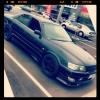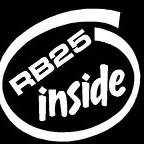Do I Need Same Tyres On Rear As On The Front
Announcements
-
Similar Content
-
Latest Posts
-
Welcome. Very nice looking wagon. Glad to hear others are appreciating the forum over FB. I find it so refreshing that its not the same 4 questions on repeat and your question doesn't get buried in people's feeds within 5 minutes.
-
Welcome. So, more for teaching general maintenance or modifying? If modding, what's in the plans?
-
Welcome. Sounds like a few stagea owners are joining lately. Its nice to hear.
-
Welcome. The forum is definitely a fantastic source of information. Hopefully you find answers to any and all questions you may end up having.
-
Welcome. Options will come down to budget, skill and wants/needs. Give us a little more info about what you want to achieve.
-




Recommended Posts
Create an account or sign in to comment
You need to be a member in order to leave a comment
Create an account
Sign up for a new account in our community. It's easy!
Register a new accountSign in
Already have an account? Sign in here.
Sign In Now